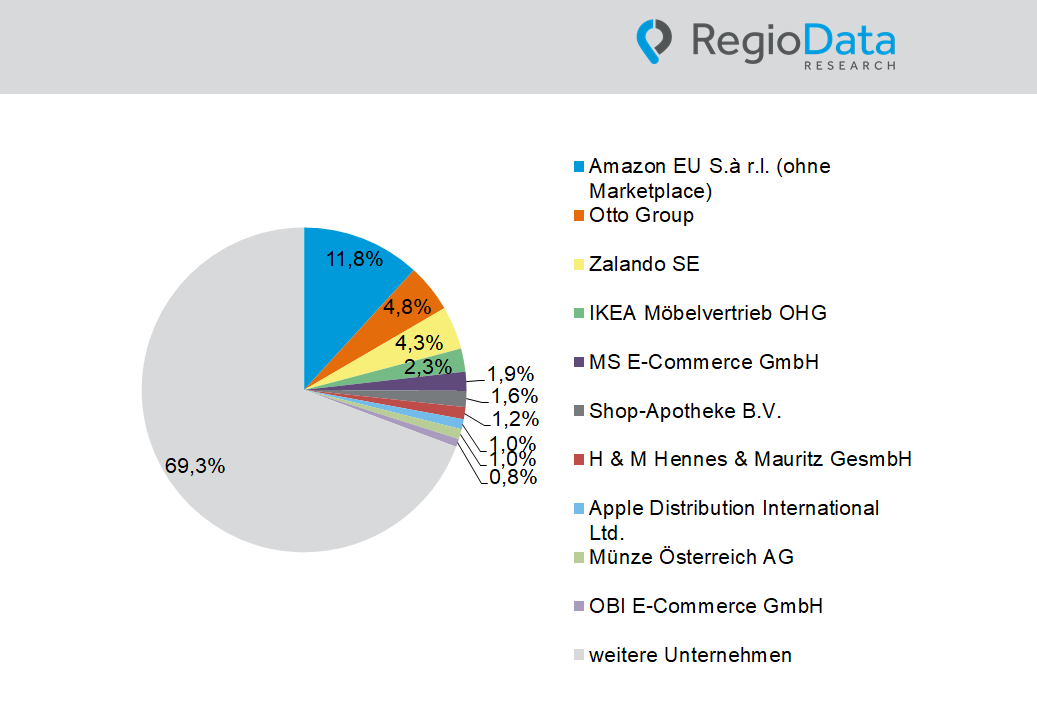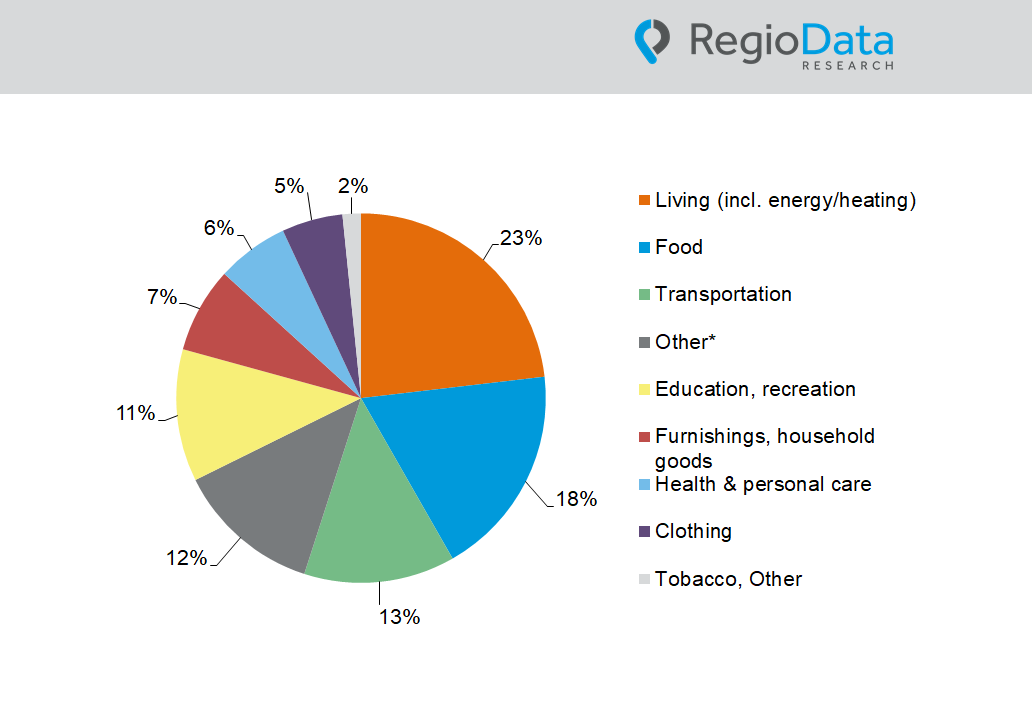AUSTRIA
The other dimension of nutrition - Austrians change their spending behavior
The current analysis by RegioData Research reveals a significant shift in spending on nutrition: an increasing portion is directed towards the gastronomy sector instead of retail. And when it comes to retail, it’s either very high-end and organic or extremely affordable.
While just 29% of nutrition expenses were spent on gastronomy a decade ago, the current figure has already surpassed 36%, and the trend is rapidly increasing. The reasons likely lie in the altered consumption patterns, especially among younger demographics. Visiting restaurants and eateries has gained significance in recent years, regardless of the influence of the COVID-19 pandemic.
Austrians are significantly increasing their expenditures on food as well
In the year 2022, the average Austrian had an income of around €25,000. Out of this, approximately €4,600 was allocated to nutrition, making it the highest expenditure category. When looking back a decade, around €1,400 less was spent on nutrition, representing a total increase of 44% compared to 2012. The rise in food expenses cannot be solely attributed to the general price increases imposed by food corporations. Instead, they reflect the changing preferences of consumers. People are increasingly prioritizing quality, organic and local products, as well as animal welfare.
As a result, the share of fresh, typically more expensive, organic food has already risen to 12% this year, compared to 10% in 2020 and 8% in 2018. This shift in consumption habits is clearly visible through the higher spending on food.
Expenditures on gastronomy have nearly doubled
The significant increases in nutrition-related spending are primarily attributable to the gastronomy sector. While the share of expenses on groceries as a part of total consumer spending has remained almost unchanged in the past ten years, there is a clear shift in favor of gastronomy. Retail spending has increased by 30% over the past decade, while the gastronomy sector has witnessed a remarkable growth of 80%.
Currently, the average Austrian spends approximately €1,600 per year on dining out, whereas in 2012, this figure was around €900. This underscores the growing importance of the gastronomy sector, as restaurants and eateries have evolved into essential social hubs, especially for younger demographics. They go beyond mere sustenance, promoting social interaction, cultural exchange, and community bonding.
Apart from the setbacks in 2020 and 2021 due to the COVID-19 pandemic, the gastronomy sector has maintained a consistent growth trend of 5 to 7% over the past decade, surpassing the inflation rate during this period.
Burgeoning gastronomy scene in Europe
The trend of dining out is not limited to Austria alone. A significant increase in gastronomy spending is also observed in other European countries. For example, in the Czech Republic, there has been a 100% increase in gastronomy spending compared to 2017. However, the average dining expenses in the Czech Republic stand at only about €600 per person per year, which is still considerably lower than the Austrian level.
On the other hand, dining out is relatively less common outside one’s own home, particularly in the Balkans. In countries like Serbia, Romania, and Bosnia and Herzegovina, gastronomy expenses are as low as €90 to €125 per person. However, since 2017, the share of gastronomy expenses has increased by 60% to 70% in these countries, with Romania experiencing an impressive 144% rise. In Croatia, out-of-home dining has increased by around 127% over the past five years and currently amounts to €281 per person.
Slovenia currently records expenses of nearly €700, which is a significant increase compared to 2017 when the average Slovenian spent about €450 on dining outside. Italy, with approximately €1,100 per person, has notably higher gastronomy expenses, attributed to its rich Italian culinary culture and deeply rooted gastronomic diversity.
While gastronomy expenses naturally correlate with purchasing power, there are significant deviations that confirm many stereotypes. High proportions of spending in Italy and France are contrasted by much lower expenditures in the UK, the Balkans, and Switzerland.
Share post




